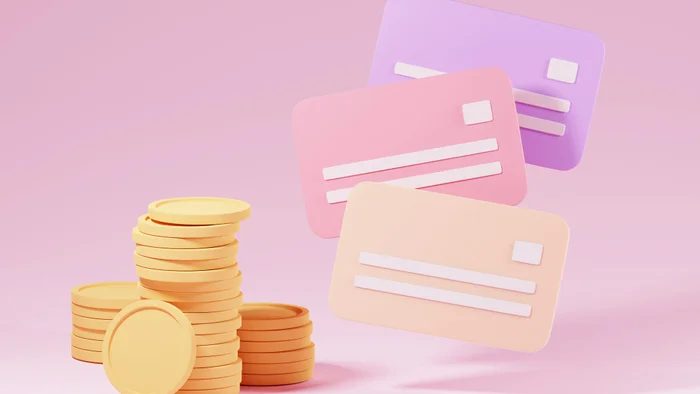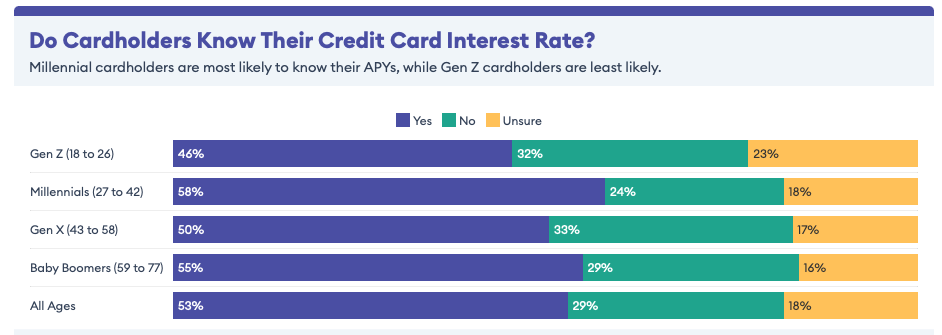Introduction
In today’s rapidly changing financial landscape, turning your credit card balance into cash can be a valuable lifeline in unexpected situations. According to Nasdaq, 23% of respondents in a survey conducted in America have turned to their credit cards for emergency support.
With shifting financial habits, it is important to understand how one can convert credit card balances into cash. While there are ways to do so in the US, navigating them within the boundaries of legality and financial responsibility is crucial.
This blog explores the methods for accessing cash from your credit card and helps you make informed decisions. These methods encompass a range of options, including cash advances and other innovative approaches.
Read more: 7 tips to make your credit card work for you

Understanding Cash from Credit Cards
A credit card cash advance is a transaction that allows cardholders to withdraw money from their credit card. However, it is important to differentiate cash advances from purchases. While purchases involve deferring payments, cash advances immediately accrue interest and additional fees, making them an expensive form of borrowing.
When you decide to get a cash advance, you will usually encounter fees that can either be a fee or a percentage of the amount withdrawn. Additionally, interest begins to accumulate. It is often at a higher rate compared to regular purchases. It contrasts with the grace period provided for purchases, where interest accumulation continues if the balance is not paid by the due date.
It is crucial to consider whether or not to use a credit card cash advance. While it can provide access to funds during emergencies, there are downsides, such as costs compared to methods, which could strain your finances. Therefore, before opting for a cash advance, exploring other options and understanding the associated fees and interest rates is wise to make a sound decision.
CTA: "Take Charge of Your Future by Managing Your Finances Well Today! Sign up for Bright Money and explore new ways to achieve financial success."
Gain a comprehensive understanding of the costs of credit card cash advances and alternative financial tools to maximize your financial efficiency. Discover the key insights into managing credit cash advances here.

Source: Forbes
Method 1: ATM Cash Advances
Getting cash from your credit card at an ATM is the best way to convert cash from your credit card. Here are the steps you should follow:
1. Set up a PIN: If you have yet to receive a PIN, contact your bank to get one. Some banks allow you to do this online, or you can contact your bank’s customer service team.
2. Find an ATM: Remember that ATMs may have fees on top of those imposed by your card issuer. To avoid charges, consider using an ATM provided by your bank.
3. Insert your card and Enter the PIN: Put your card into the ATM and enter your PIN to prove that you have authorization for the transaction.
4. Choose the account for withdrawal: If you have accounts with the bank, select the one from which you want to withdraw funds.
5. Enter the desired amount: Most banks require withdrawals in increments of $20.
6. Take note of any fees: ATMs usually inform users about any fees associated with withdrawing money from an affiliated account.
7. Retrieve your cash and card: Once the ATM dispenses your money, collect your cash and credit card.
Knowing the costs and limitations of cash advances at ATMs is important. Apart from the fee charged by the ATM operator, your credit card provider might also charge a cash advance fee and interest rates between 20-25% APR. It is advisable to use this option in emergencies and repay the borrowed sum promptly to minimize interest charges.
Method 2: Convenience Checks
Convenience checks are often included with credit card statements. They work like personal checks linked to your credit card account. To use them, you only need to write a check for the desired amount to the recipient or yourself and deposit it into your bank account.
These checks are handy for payments when you have limited alternatives. However, using them to avoid costs and interest charges is crucial. Convenience checks have an APR of 25% or more, along with other fees such as a percentage of the transaction or a minimum fee.
Method 3: Balance Transfer to a Bank Account
To move the balance from your credit card to your bank account, you must contact your credit card provider and ask for a balance transfer. This approach can be a way to gain access to cash. However, it does have certain advantages and disadvantages.
While you may benefit from interest rates and the opportunity to consolidate your debt, remember that there might be fees and interest rates between 20-25% APR to the transferred balance, which can impact the cost. Considering these associated expenses and comparing them with other methods before deciding on a balance transfer to your bank account can help you make a wise decision. This can be easy on the pocket.
Method 4: Peer-to-Peer Payment Apps
The most popular cash option for credit cards is utilizing peer-to-peer payment apps like PayPal or Venmo. Linking your credit card to these apps is a simple process. Once connected, you can easily send money from your app account to a trusted friend or family member who can then provide you with the amount of cash.
While this method offers convenience, it is essential to use it carefully. Make sure that transactions are only conducted with individuals you trust. Also, any transfers made inadvertently to an incorrect account or recipient could lead to complications. You must also be mindful of transaction fees and the 10-12% interest rates associated with payment apps.
Method 5: Cash Back Rewards Redemption
Cash back rewards are a perk credit card companies offer that lets you earn a percentage of your purchases back as a cashback reward. To redeem your rewards for gift cards, credit card companies usually provide a portal or customer service line where you can access a range of gift cards from partner retailers. You can then exchange your cash back rewards for these gift cards.
This approach is a way to make the most of your credit card benefits by transforming your cashback into tangible rewards. However, it is important to be aware of the terms and conditions associated with redeeming gift cards, such as any expiration dates or restrictions on where they can be used. Before choosing this method, you must carefully evaluate the reward options and redeem the ones that best fit your spending needs and preferences.
Method 6: Personal Loans
Credit card issuers often offer personal loans, allowing you to borrow a specific amount at a fixed interest rate. These loans come with the advantage of providing structured repayment terms, which can be more manageable than high-interest cash advances. However, it is crucial to note that interest rates on personal loans may vary based on your creditworthiness and the lender's terms. The interest rates for excellent credit (720-850)is between 10.73%-12.50%, 13.50%-15.50% for good credit (690-719), 17.80%-19.90% for average credit(630-689), and 28.50%-32% for bad credit (300-629).
Eligibility requirements usually involve checking your credit history and providing proof of income. You are more likely to get lower interest rates with a good credit record. You can compare the interest rates and terms offered by your credit card issuer or other lenders before proceeding with a loan that aligns with your goals. Responsible borrowing and diligent loan repayment are crucial to avoid unmanageable debt.
Read more: When should you start building credit?
Risks and Things to Consider
Before delving into converting credit into cash, it is important to acknowledge the risks involved. Cash advances from credit cards often come with fees and interest rates compared to purchases. It can create a cycle of debt if not managed wisely.

Source: Forbes
Furthermore, these transactions can impact your credit score. Taking out cash advances can increase your credit utilization ratio, which could lower your credit score. It is crucial to repay them to mitigate these effects.
Here are some key considerations:
- Only resort to cash advances in emergencies.
- Make choices a priority, such as paying bills on time and keeping credit card balances low.
- Keep an eye on your credit report for any changes.
- Take proactive measures in addressing any discrepancies that arise.
By staying well-informed and practicing discipline, you can minimize the pitfalls of converting credit into cash.
"Do Not Allow Financial Problems to Affect Your Future! Sign up with Bright Money and find reliable solutions to all money-related worries and hassles today."
Conclusion
While cash advances, balance transfers, and loans offer ways to access cash quickly, it is wise to avoid tapping these options unless facing a true emergency. The fees, interest rates, and potential debt burden make them expensive financing options for everyday expenses. Before turning to cash from credits, you must plan to reduce discretionary spending, tap into savings, sell unused possessions, or pick up extra work to generate funds. If a cash advance or other credit option becomes essential due to an unexpected crisis, have a plan to repay it as quickly as possible to avoid compounding interest charges.
The bottom line is cash from credit cards should only be used as a last resort for cash flow rather than convenience. By building healthy day-to-day financial habits, tracking expenses diligently, and budgeting for the unexpected, you can avoid costly debt obligations that derail your finances in the long run.
Maintaining control over your spending is key. If you require assistance managing your credit and improving your financial health, consider exploring BrightMoney—a platform dedicated to helping individuals reduce their debt load and build better credit. BrightMoney utilizes cutting-edge technology and artificial intelligence to empower you in managing your finances. BrightMoney provides you with the tools and expert insights required to make informed decisions, leading you toward a debt-free future.
FAQs
1. What are the typical fees for credit card cash advances?
Cash advance fees are usually 5% of the amount withdrawn or $10, whichever is greater. So, a $100 cash advance would incur a $10 fee.
2. How is the interest charged on cash advances?
Interest begins accruing immediately on cash advances. This interest rate is often higher than the regular APR for purchases rangin between 20- 25%.
3. Can I use a credit card convenience check as a cash advance?
Yes, convenience checks from your credit card company that you convert into "Cash" are considered a cash advance. All cash advance fees and interest will apply.
4. Are there limits on the amount of cash advances I can take?
Yes, most credit card companies set a cash advance limit, usually a percentage of your total credit limit. It is usually around 25% or less of your total limit.
References
https://www.forbes.com/advisor/credit-cards/credit-card-statistics/
https://www.cbsnews.com/news/bankrate-emergency-savings-survey-americans-report/



